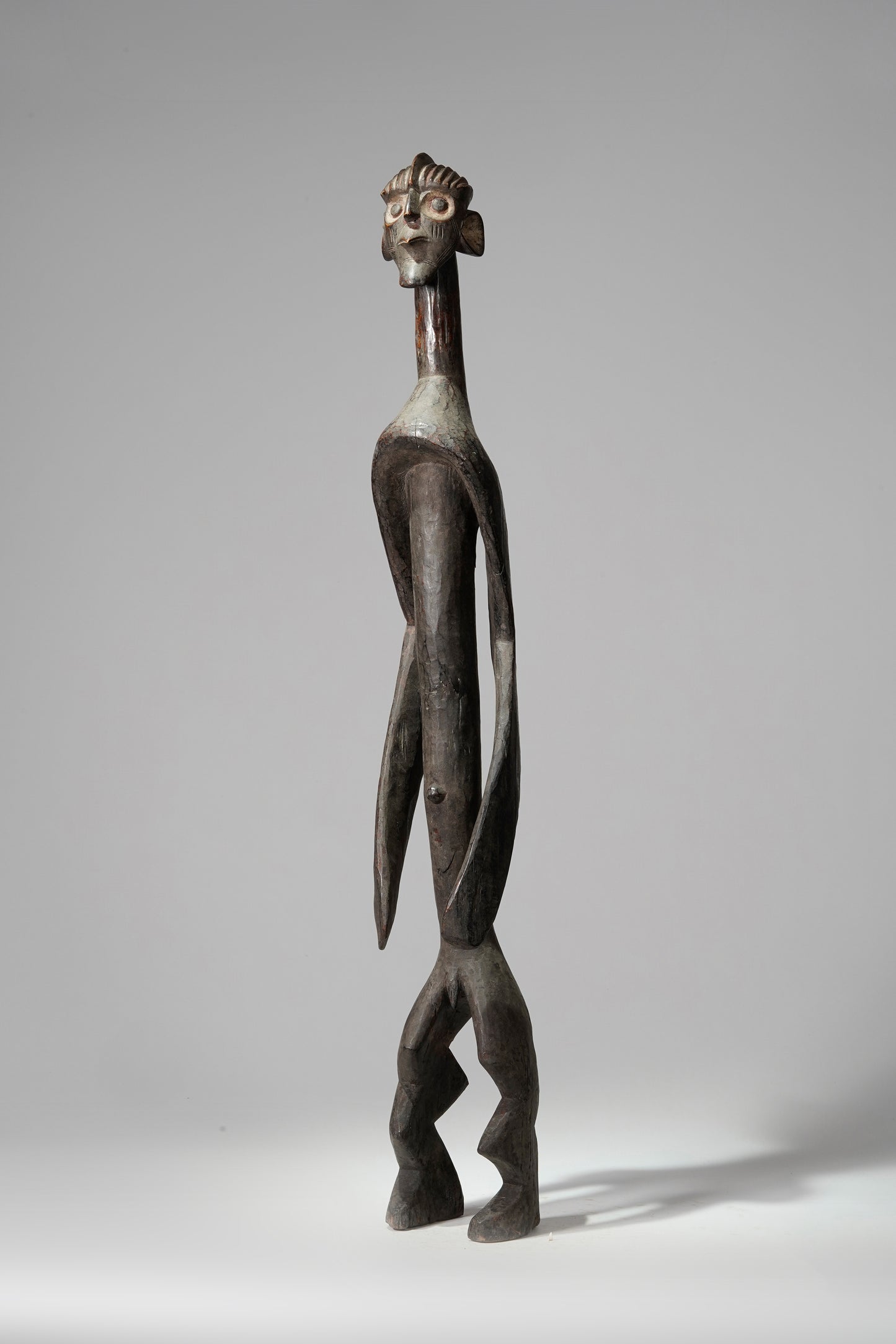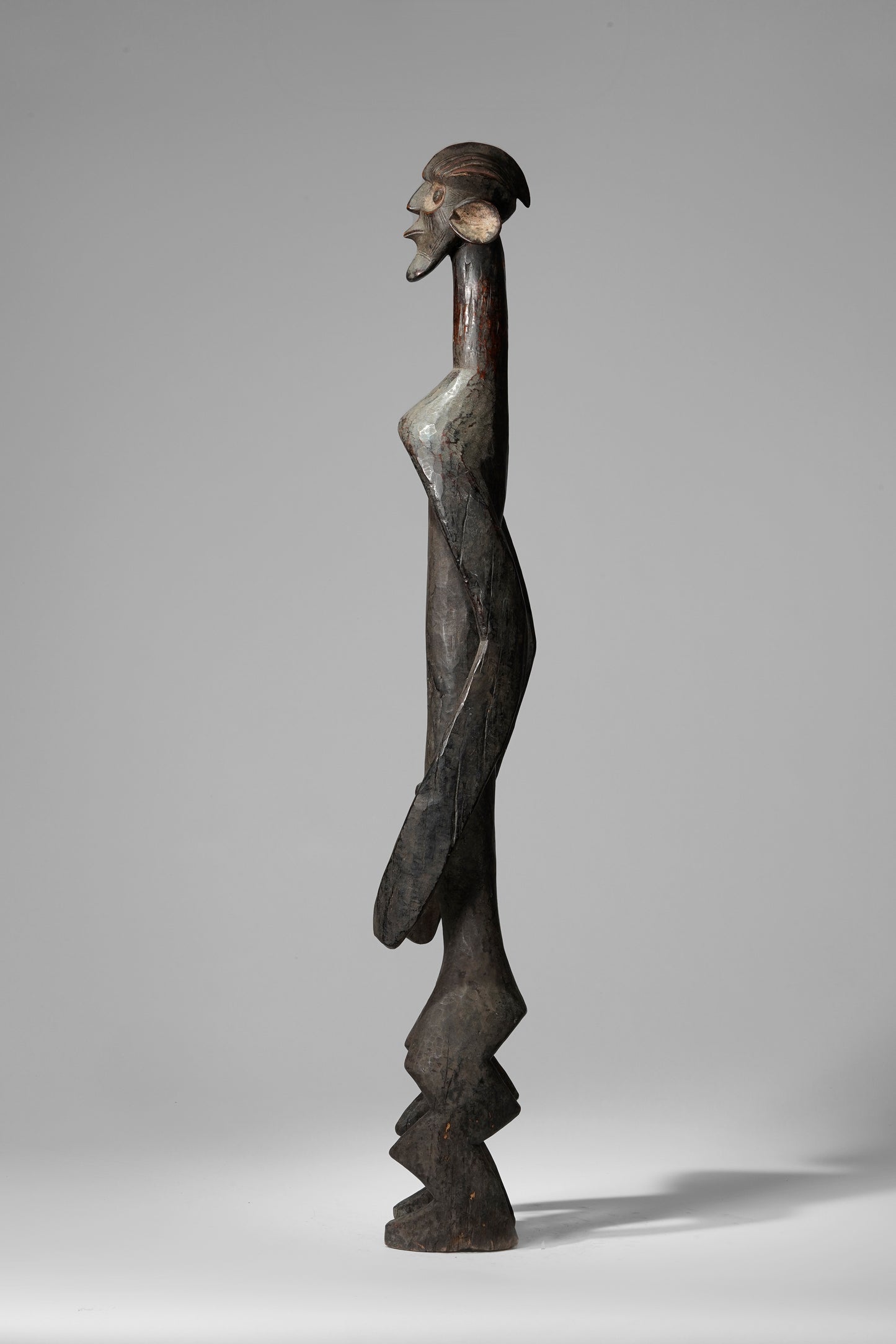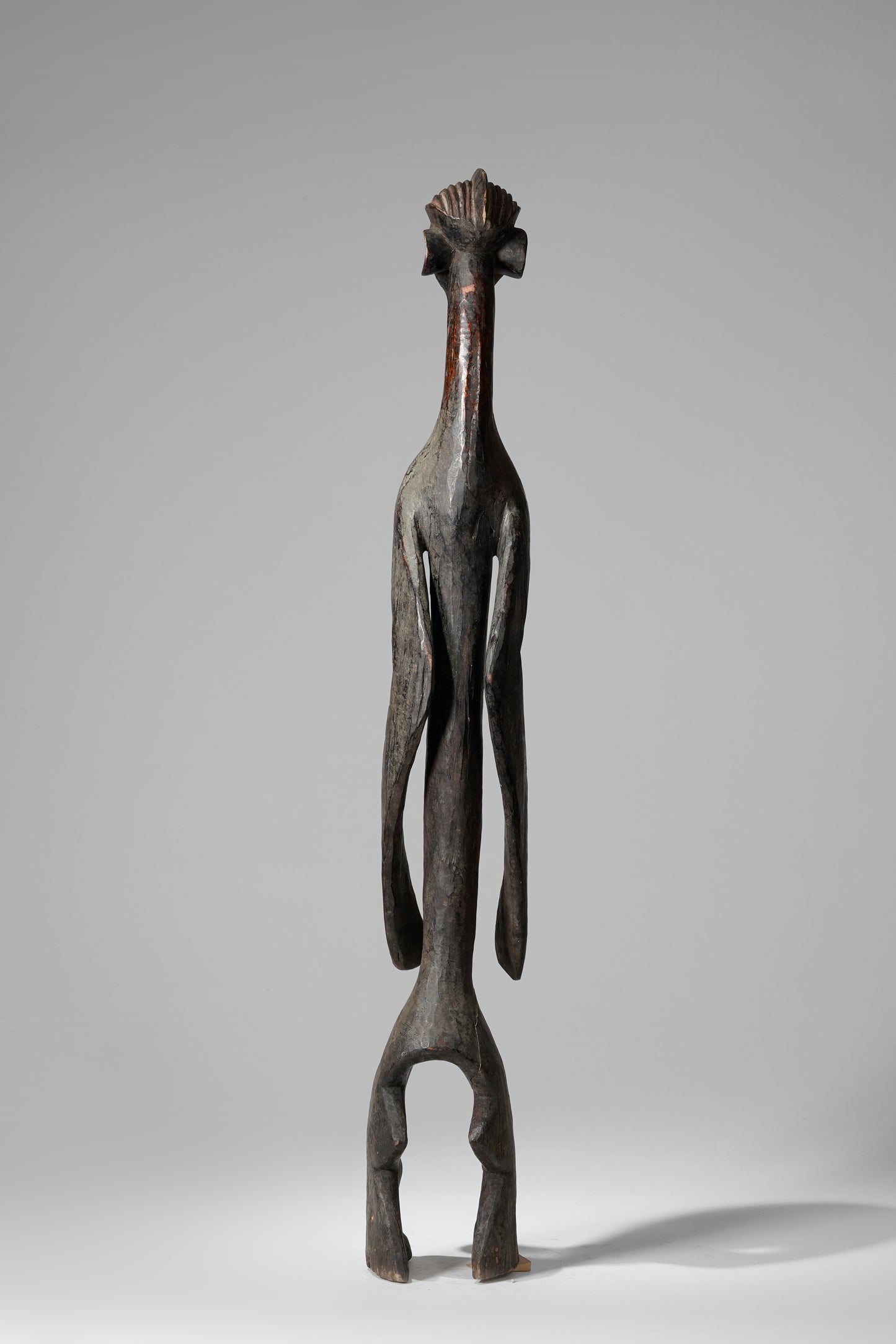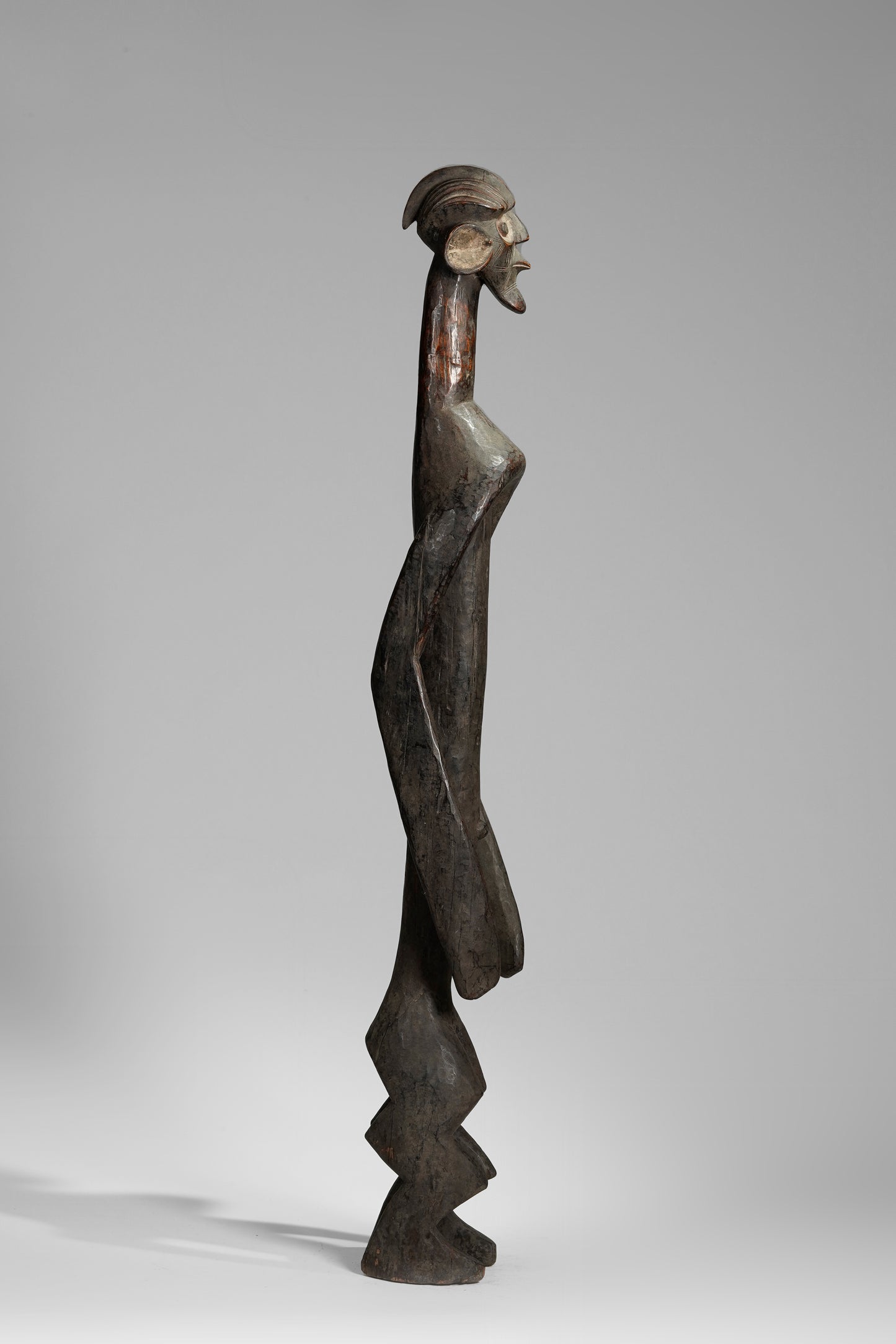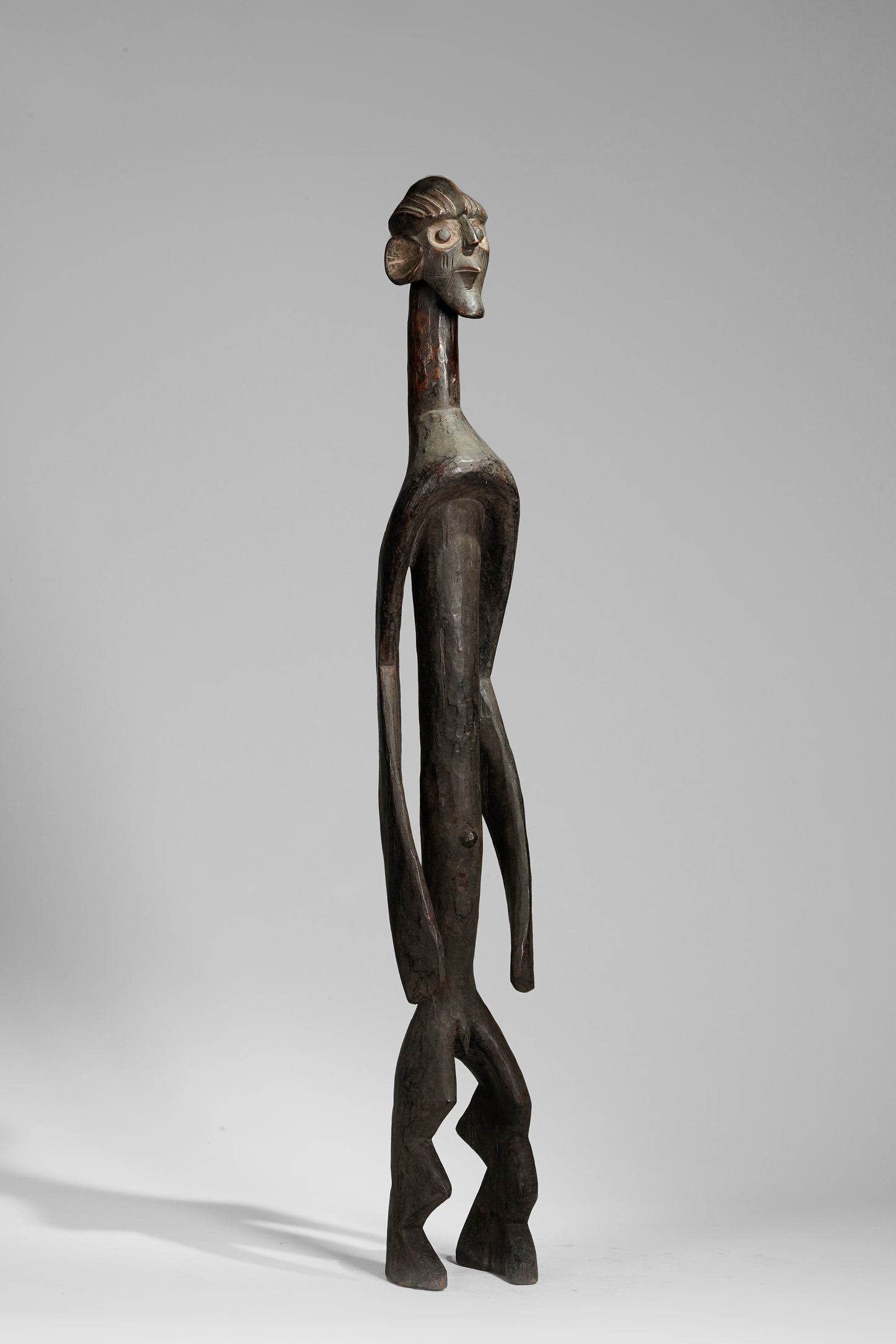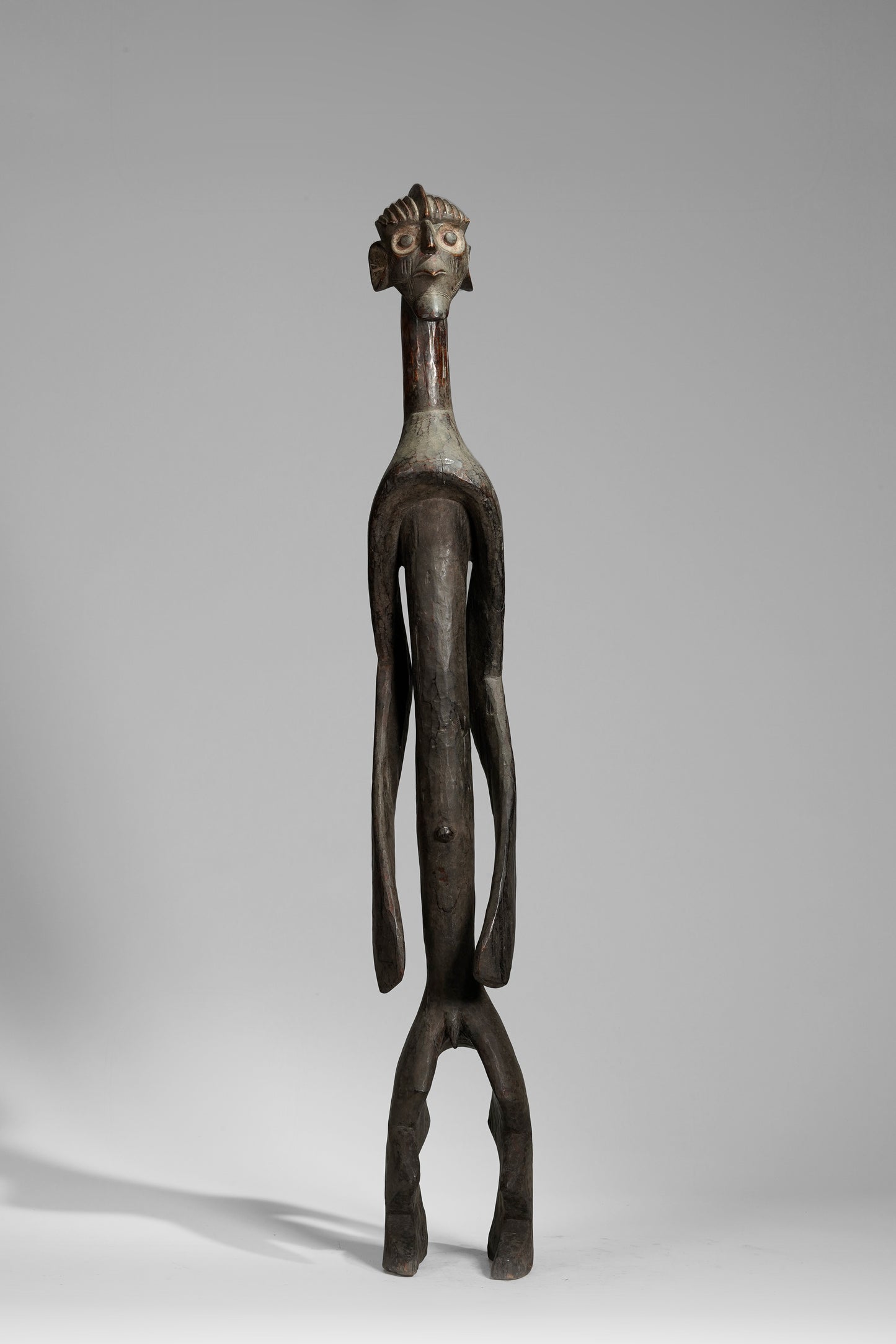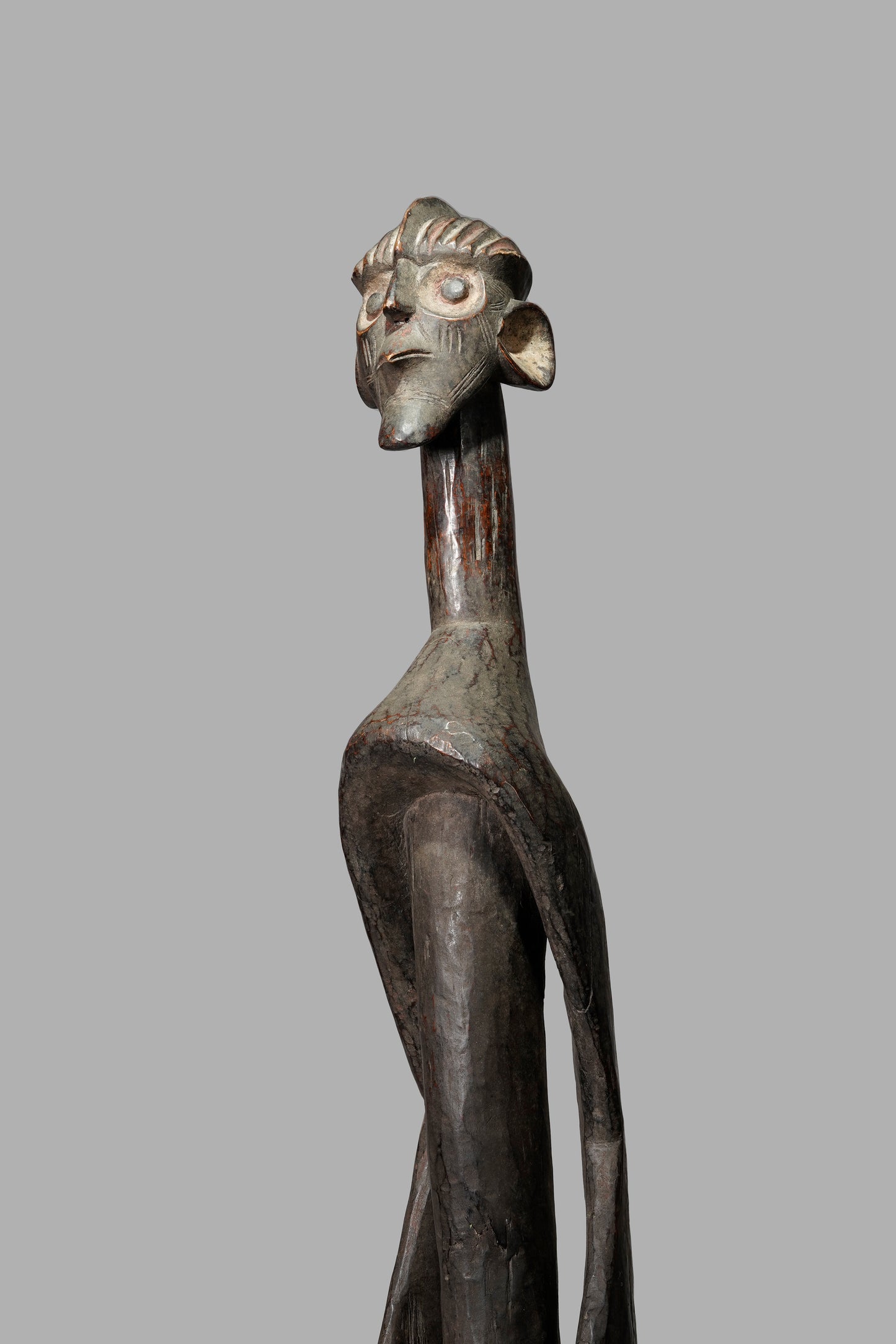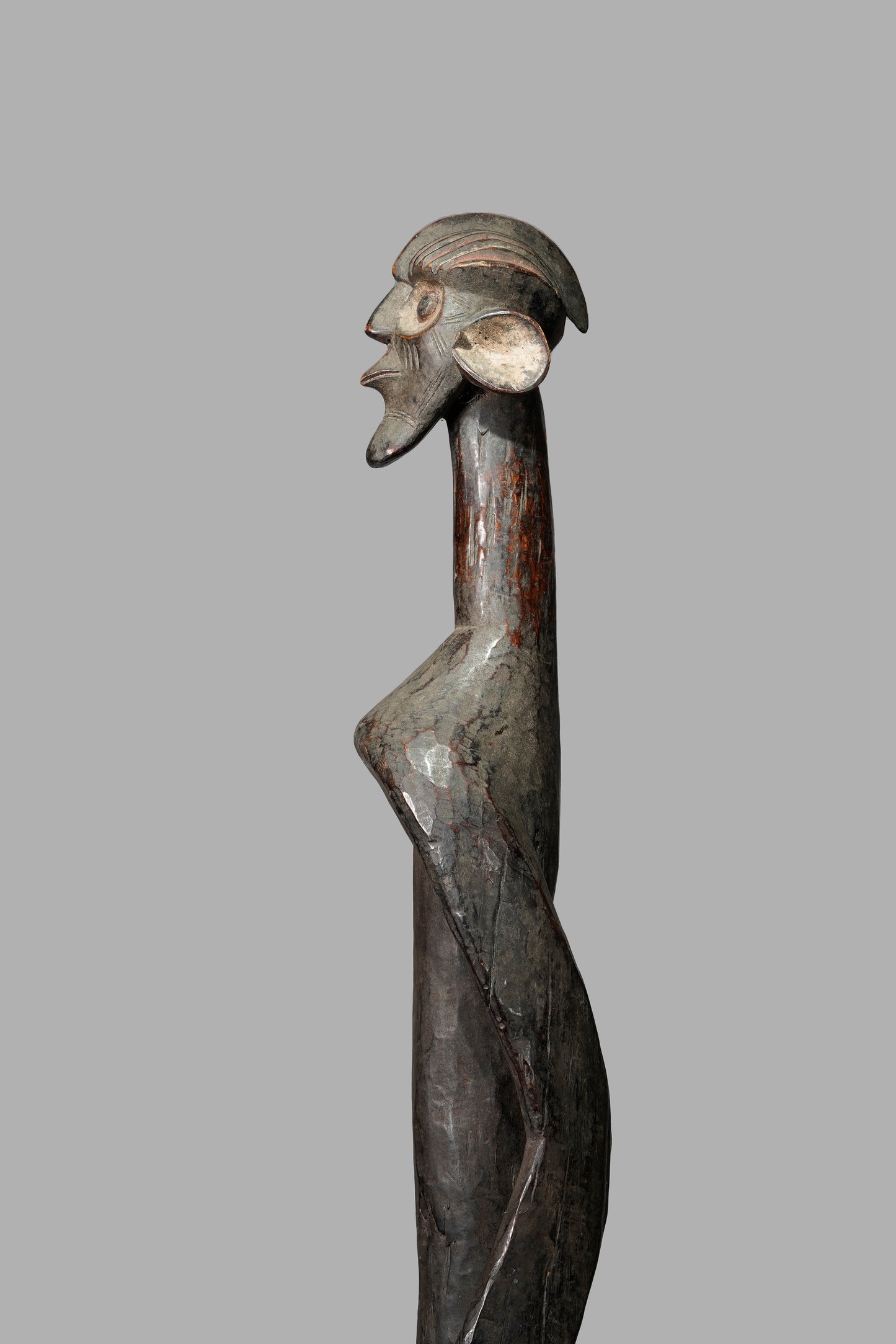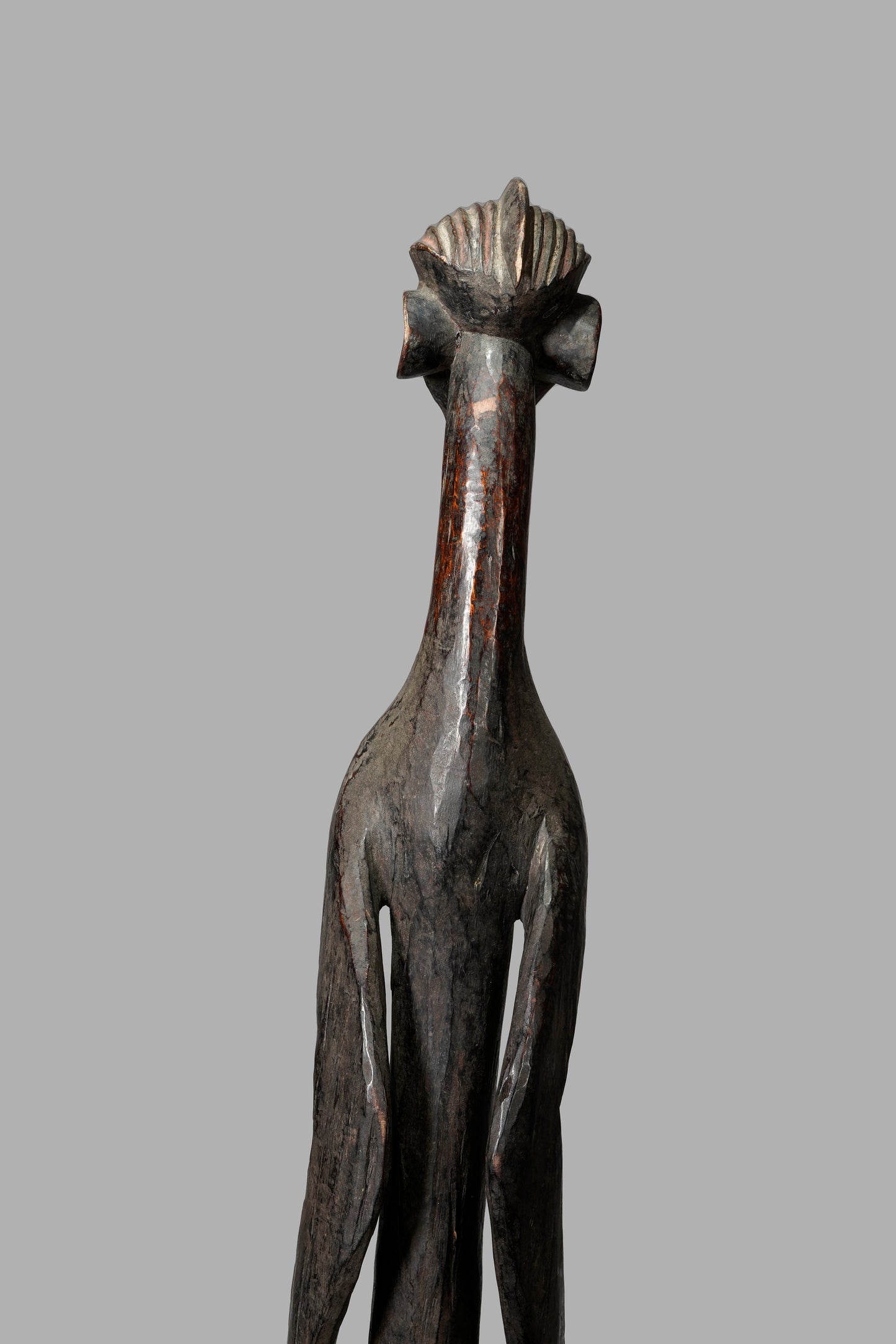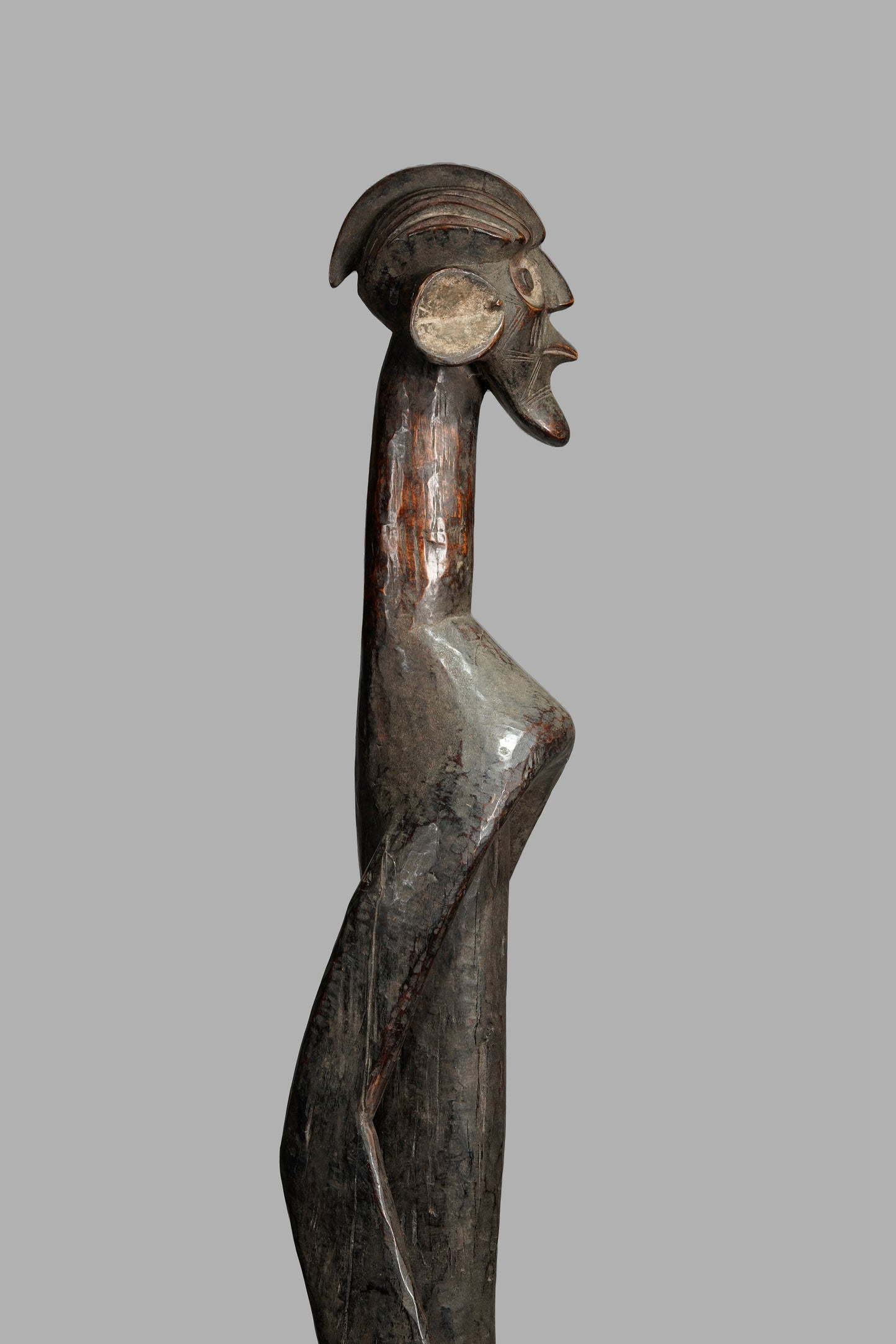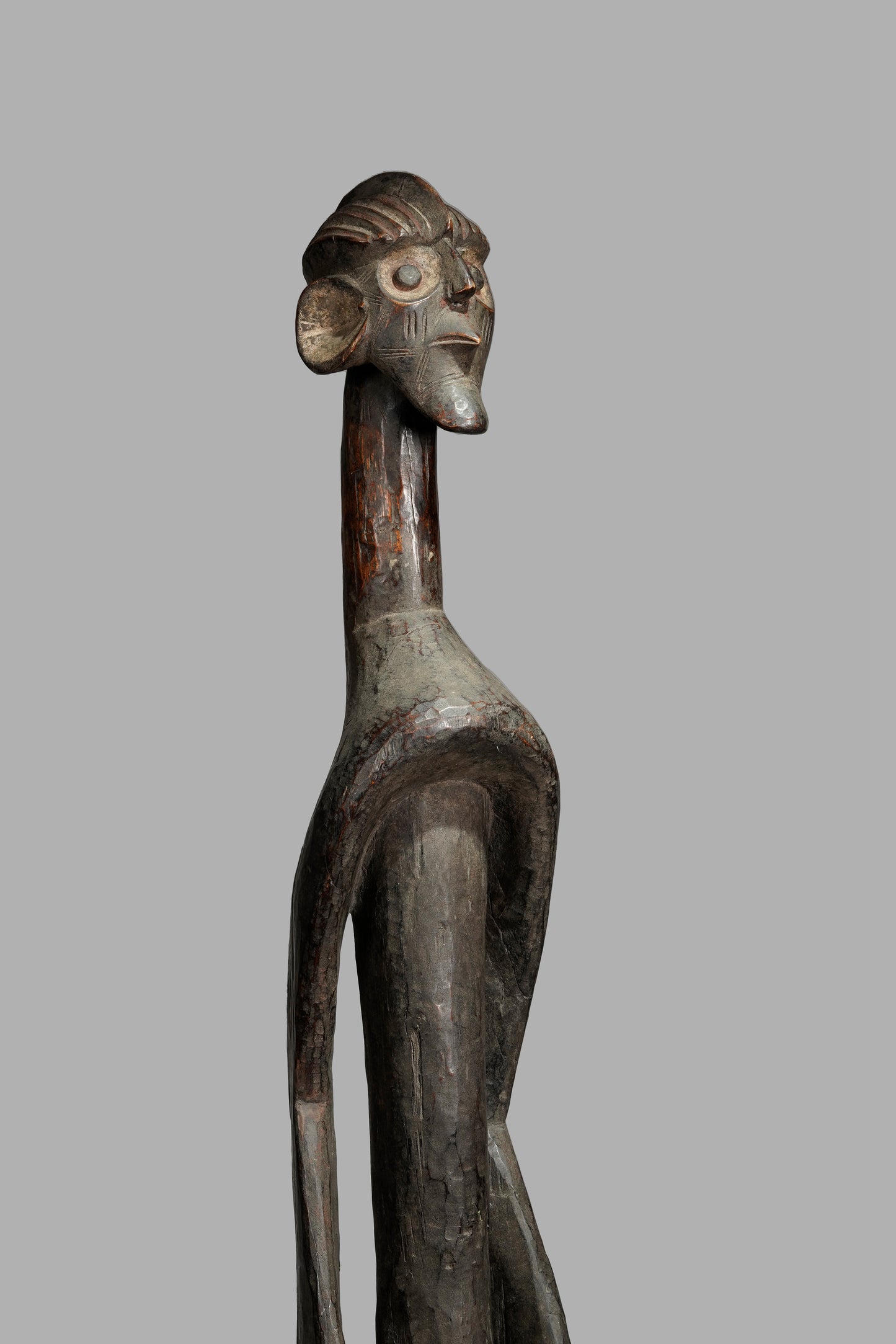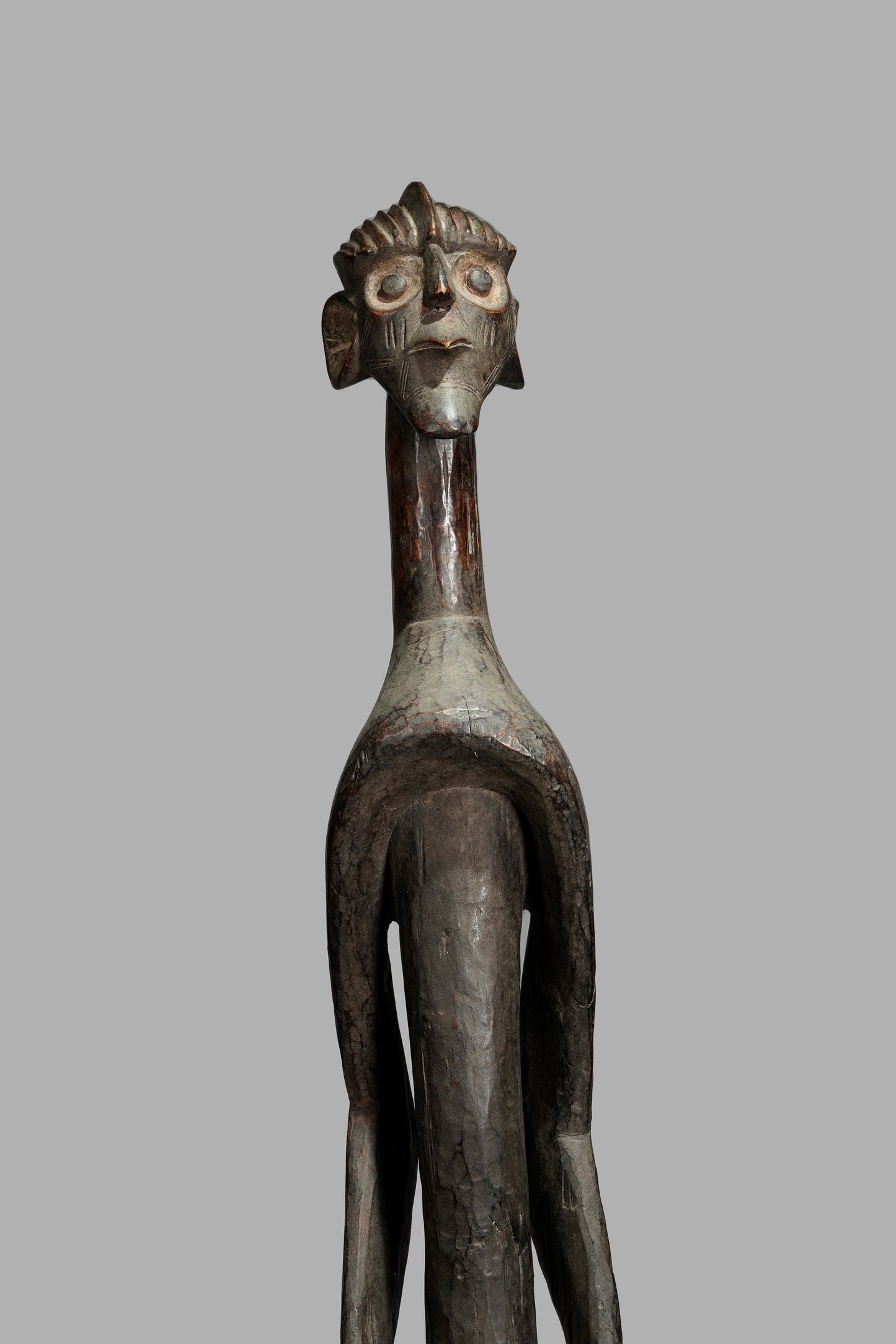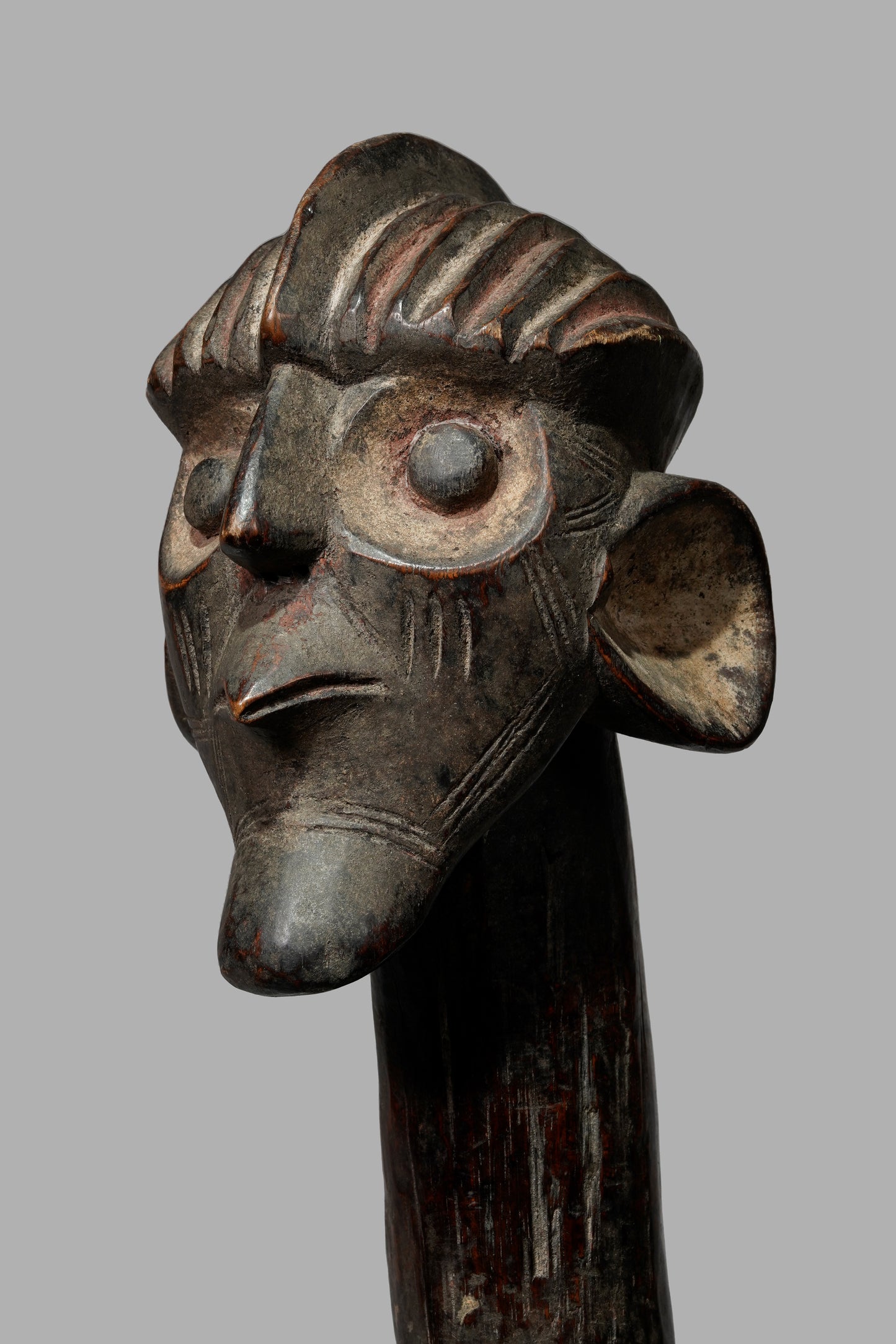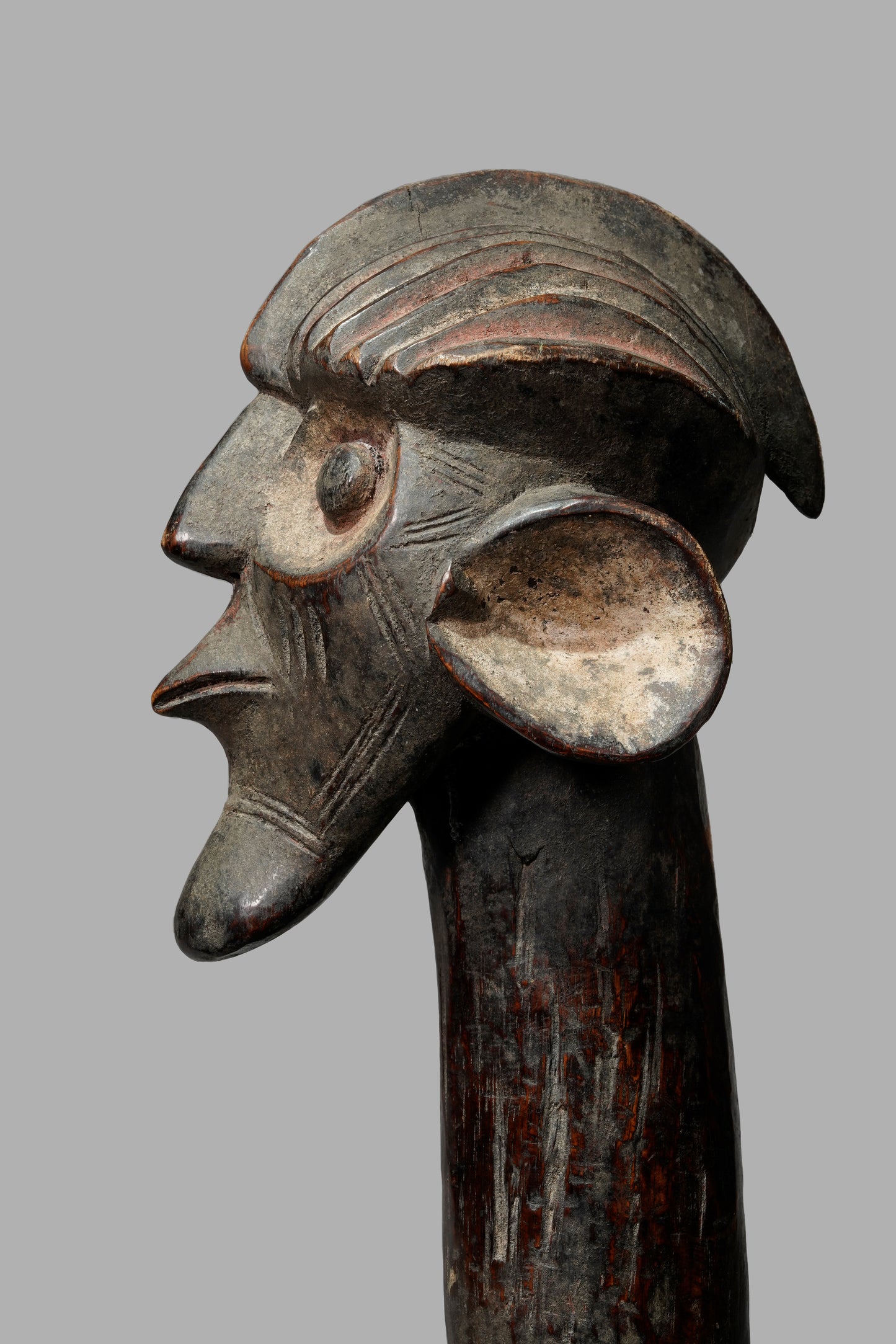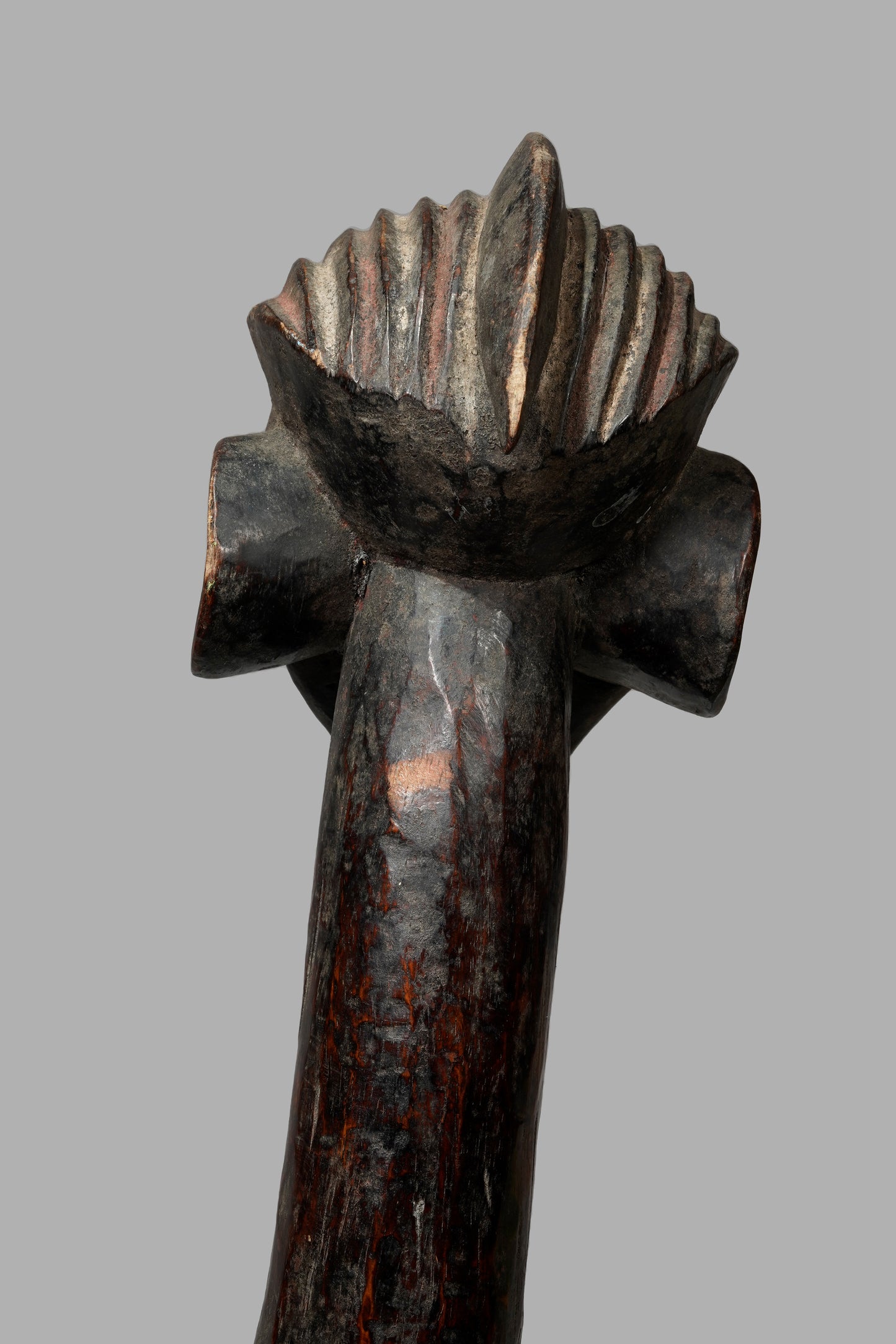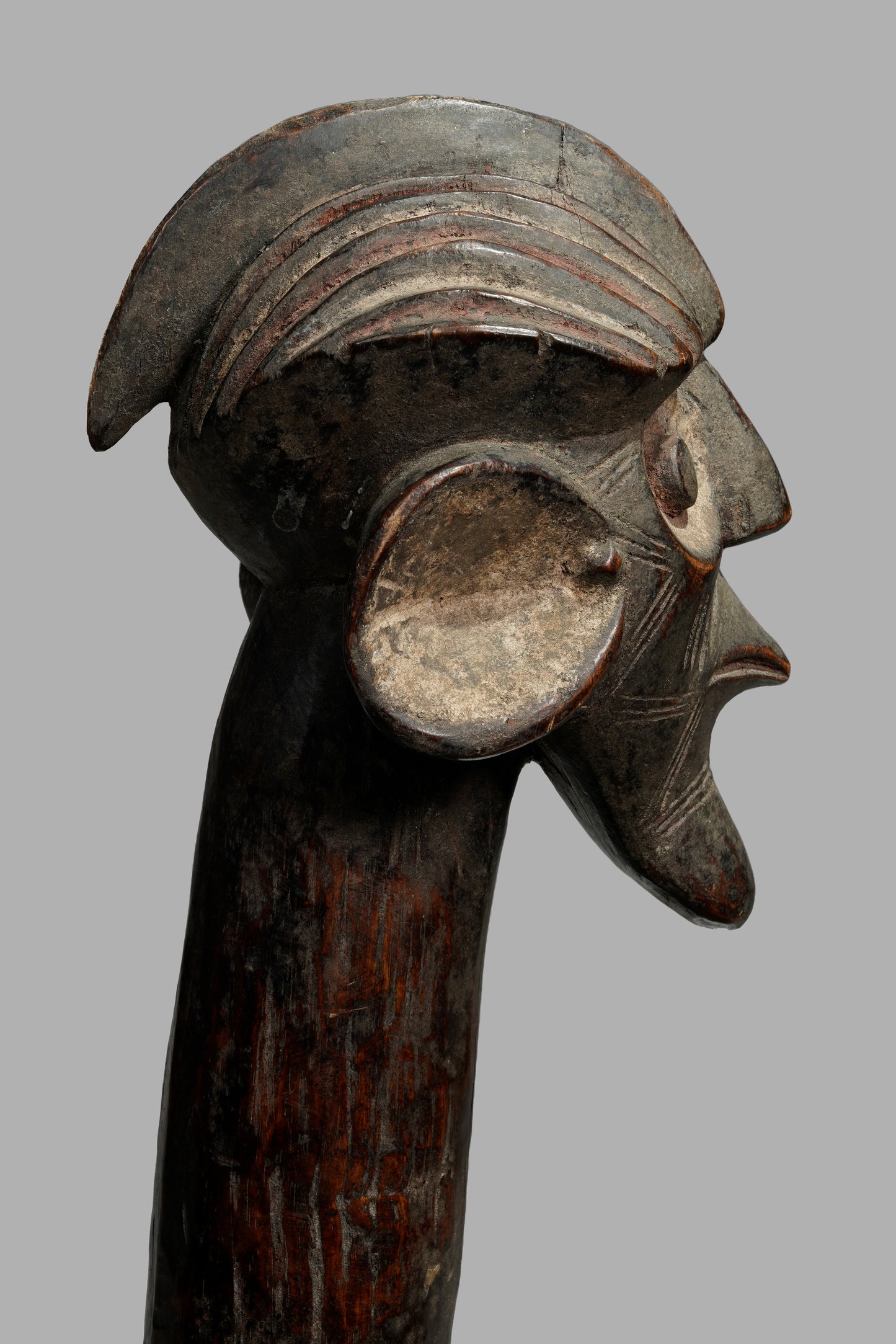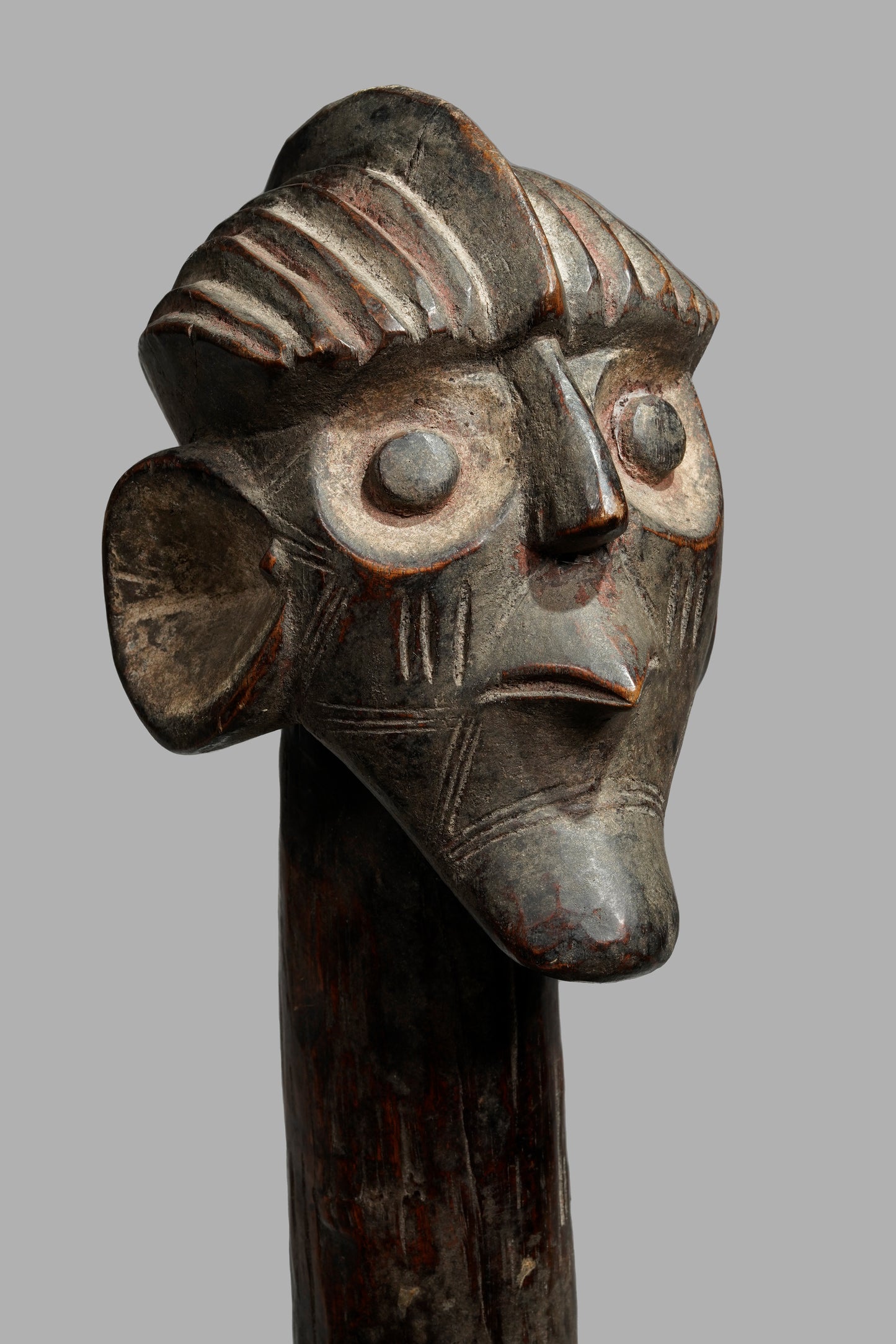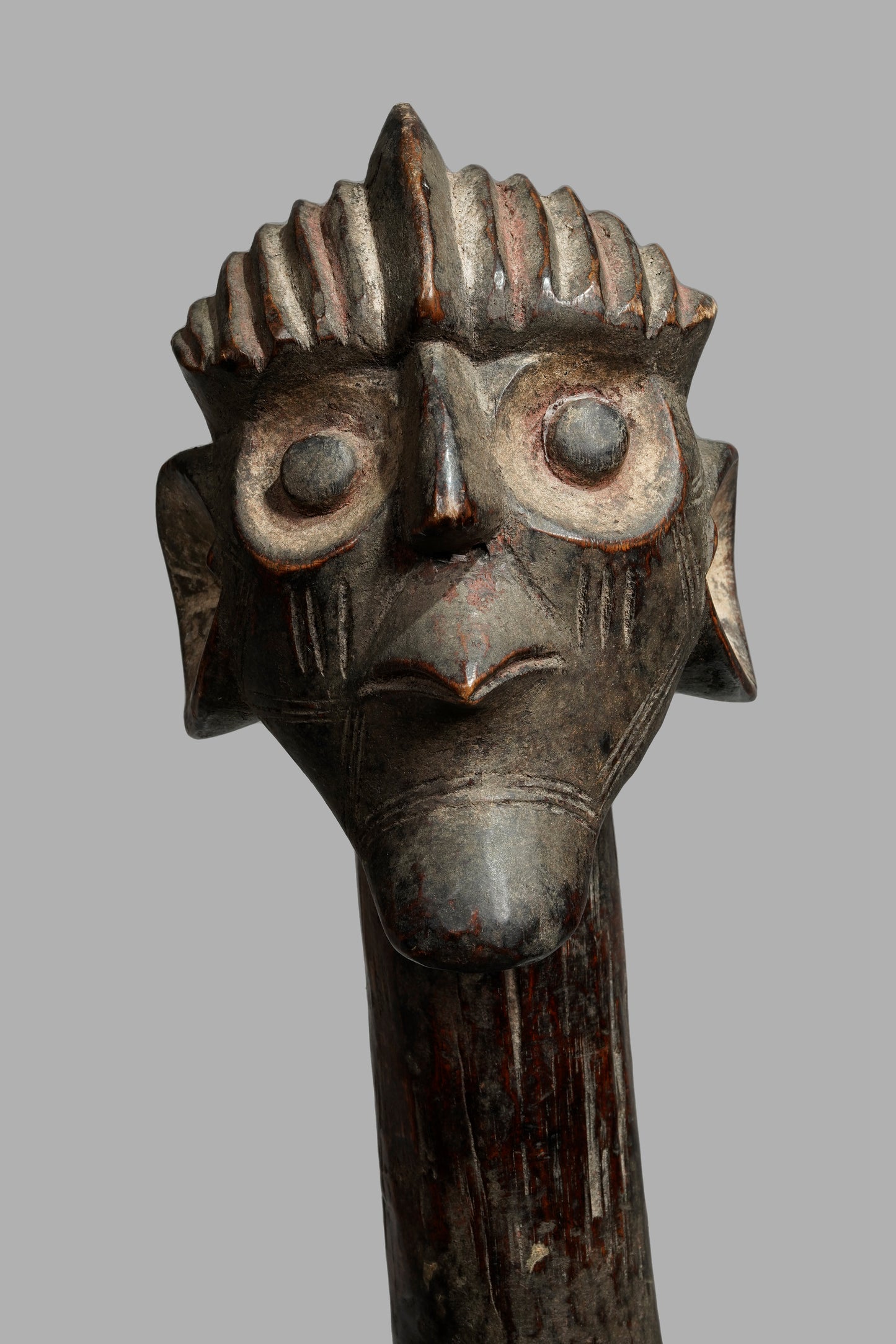wolfgang-jaenicke
A Mumuye statue
A Mumuye statue
Couldn't load pickup availability
A Mumuye statue standing on short zig-zack legs, a very overlength straight torso, arms and neck are equally overlength, the small head with expressive facial expression, protruding chin, a bird-like mouth, small nose and large round eyes, animal-like almost round ears, the coiffure as if combed backwards; remains of white and red painting on the face, a matt grey-brown patina, only on the neck shiny due to frequent touching.
Until the 1970s most Mumuye sculptures were misattributed to their neighbours, the Chamba. With no royal system, the Mumuye are organised by age classes and choose a village chief who is assisted by a council of elders. The vabong secret society regulates Mumuye's religious life. Entry into the society is achieved through initiation ceremonies. The initiation of boys begins at the age of ten and takes place in a tsafi hut, where the statues are kept.
Even though the Mumuye shows great respect for the sculls of the ancestors, their statuary does not depict ancestors, but rather incarnate tutelary spirits. Yet, statues reinforce the status and prestige of their owner who, as he holds them in his hands, has a dialogue with them and thus ensures his personal protection. The functions of sculptural figures are varied. They were used by both diviners and healers, whose professions included diagnosis and cure of ill health and other kinds of misfortunes. The figures were used to greet rainmaker's clients, guard the house, serve as the owner's confidant, and in trials when men in dispute swear on the statue, which they must kiss. Elders used them to reinforce their status in society. It was not unusual for a figure simultaneously to serve two or more functions. Sources: Zyama.com
Lit.: Frank Herreman and Constantine Petridis, The Discovery of Mumuye Art. In: Frank Herreman, Mumuye. Sculpture from Nigeria. The Human Figure Reinvented, Milan 2016, p. 9 (8-13). Alan, G. Wilkonson, p. 608 ff, Primitivism in 20th Century Art, Prestel, ed. William Rubin, 1996.
Height: 110 cm
Weight: 4,4 kg
